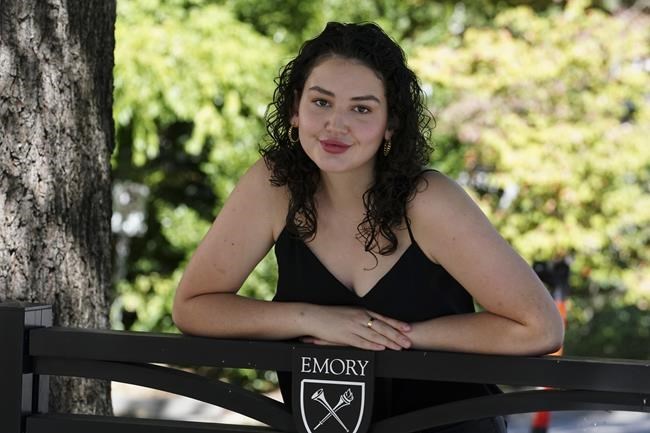Telemedicine exploded in popularity after COVID-19 hit, but limits are returning for care delivered across state lines.
That complicates follow-up treatments for some cancer patients. It also can affect other types of care, including mental health therapy and routine doctor check-ins.
Over the past year, nearly 40 states and Washington, D.C., have ended emergency declarations that made it easier for doctors to use video visits to see patients in another state, according to the Alliance for Connected Care, which advocates for telemedicine use.
Some, like Virginia, have created exceptions for people who have an existing relationship with a physician. A few, like Arizona and Florida, have made it easier for out-of-state doctors to practice telemedicine.
Doctors say the resulting patchwork of regulations creates confusion and has led some practices to shut down out-of-state telemedicine entirely. That leaves follow-up visits, consultations or other care only to patients who have the means to travel for in-person meetings.
Susie Rinehart is planning two upcoming trips to her cancer doctor in Boston. She needs regular scans and doctor visits to monitor a rare bone cancer that has spread from her skull to her spine.
Rinehart doesn’t have a specialist near her home outside Denver who can treat her. These visits were done virtually during the pandemic.
She will travel without her husband to save money, but that presents another problem: If she gets bad news, she’ll handle it alone.
“It’s stressful enough to have a rare cancer, and this just adds to the stress,” the 51-year-old said.
Rinehart’s oncologist, Dr. Shannon MacDonald, said telemedicine regulation enforcement seems to be more aggressive now than it was before the pandemic, when video visits were still emerging.
“It just seems so dated,” said MacDonald, who recently about the issue in The New England Journal of Medicine.
To state medical boards, the patient's location during a telemedicine visit is where the appointment takes place. One of MacDonald’s hospitals, Massachusetts General, requires doctors to be licensed in the patient's state for virtual visits.
It also wants those visits restricted to New England and Florida, where many patients spend the winter, said Dr. Lee Schwamm, a vice president for the Mass General Brigham health system.
That doesn’t help doctors like MacDonald who see patients from around the country.
Cleveland Clinic also draws a lot of patients from out of state. Neurosurgeon Dr. Peter Rasmussen worries about how some will handle upcoming travel, especially because winter can bring icy weather.
A fall “literally could be life ending” for someone with a condition like Parkinson’s disease who has trouble walking, he said.
Psychiatrists have a different concern: Finding doctors for patients who move out of state. This is especially difficult for college students who temporarily leave home.
Most U.S. counties have no child and adolescent psychiatrists, noted Dr. Shabana Khan, chair of the American Psychiatric Association’s telepsychiatry committee.
“If we do try to transition patients, often there is no one there,” Khan said.
Helen Khuri’s mother found a specialist to help her when the 19-year-old’s post-traumatic stress disorder flared up last spring. But the Emory University student had to temporarily move from Atlanta to Boston for treatment, even though she never set foot inside the hospital offering it.
She rented an apartment with her father so she could be in the same state for telemedicine visits, a situation she deemed “ridiculous.”
“It didn’t necessarily make sense to … kind of uproot my life, just to receive this three-week treatment program,” Khuri said.
Even people seeing doctors close to home can be affected.
Dr. Ed Sepe’s Washington, D.C., pediatric practice has patients in Maryland who have started driving a few miles across the border into the city to connect by video. That saves them a 45-minute trip downtown for an in-person visit.
“It’s silly,” he said. “If you are under a doctor’s care, and you are in the U.S., it doesn’t make any sense to have geographic restrictions for telemedicine.”
Sepe noted that low-income families tend to be in jobs that don’t allow time off for in-person visits. Some also have a hard time getting transportation. Video visits were helping with these obstacles.
“It’s bigger than just telemedicine,” he said. “There’s a missed opportunity there to level the playing field.”
States can play an important role in telemedicine's growth by guarding against fraud and protecting patient safety, according to Lisa Robin, an executive with the Federation of State Medical Boards.
But the federation also recommends that states loosen some telemedicine restrictions.
That includes permitting virtual follow-ups for someone who has traveled out of state to seek care or for people who temporarily move but want to stay with a doctor.
States could also form regional compacts with their neighbors to ease cross-border care, noted Dr. Ateev Mehrotra, a Harvard health policy professor who studies telemedicine.
“There’s so many ways that these issues can be addressed,” he said
In the meantime, patients who need care now are trying to figure out how to manage it.
Lucas Rounds isn’t sure how many visits he will make to see MacDonald in Boston to monitor his rare bone cancer. The 35-year-old Logan, Utah, resident already spent months away from home earlier this year, undergoing radiation and surgery.
Plus he has a wife and three young girls and expenses like a mortgage to consider.
Rounds says he has to think about taking care of his family “if the worst happens.”
“If I die from cancer, then all these expenses we’ve accrued … those are dollars that my family wouldn’t have,” he said.
___
Follow Tom Murphy on Twitter:
___
The Associated Press Health and Science Department receives support from the Howard Hughes Medical Institute’s Department of Science Education. The AP is solely responsible for all content.
Tom Murphy, The Associated Press




